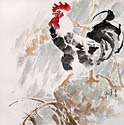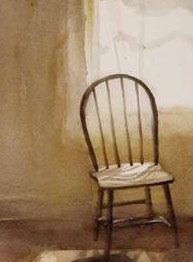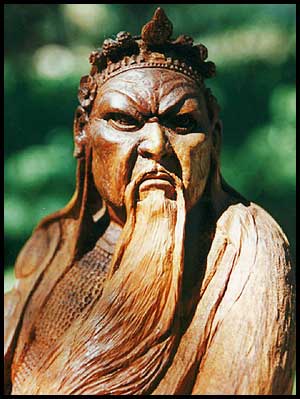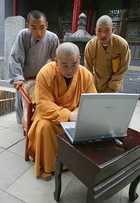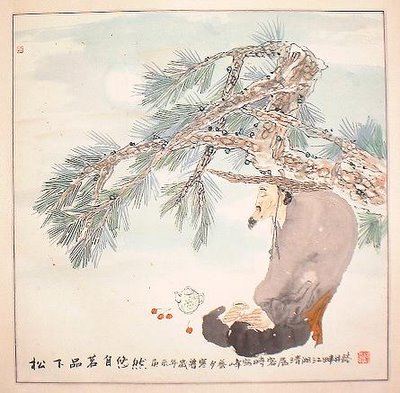
This news story is from Yahoo. If you click on the title of this post, you'll be directed there.
Nationalism drives China, Japan apart
By Robert Marquand,
Staff writer of The Christian Science Monitor
Thu Dec 29, 3:00 AM ET
The growing trade between Japan and China in 2005 has been matched by rising symbolic and verbal provocations and a steady decline in public opinion and diplomatic ties - marking a new nadir in relations between the most important competitors for Asia's future.
And the year is ending on a sour note. Last week, China formally declared a policy of "peaceful development" as it rises economically in Asia. But within 24 hours, Japan's new foreign minister, Taro Aso, warned that China's nuclear program and secretive military development "pose a considerable threat," the first time a Japanese foreign minister has made such a bald statement of concern.
"This could possibly be the worst period of Sino-Japanese relations since World War II," says James Mulvenon, Asia specialist at the Center for Intelligence Research and Analysis in Washington.
Few analysts predict violent conflict between Japan and China. Both nations are regarded as practical and pragmatic. Yet the negative dynamics of rising nationalism, fear, historical animosity - and China's rapid economic expansion in Asia - are at work with no mediating structures or nations. Diplomats and even some Chinese and Japanese officials say privately that Washington has yet to show it is paying much attention, apparently preoccupied with other priorities such as Iraq.
Relations between the historic Pacific rivals immediately plummeted at the start of this calendar year. Japan surprised China in February, on the first day of its biggest national holiday, Spring Festival, by saying it claimed formal control of the disputed Senkaku (or Diaoyu) islands in the oil-rich East China Sea. The year has now ended with rhetorical salvos, with Beijing describing the Japanese foreign minister's comments about China's military last week as "highly irresponsible."
Two days after Mr. Aso's warning, Tokyo announced it would jointly develop a naval SM-3 missile interceptor with the US, part of a "nuclear missile shield," for use on Japan's advanced Aegis-system destroyers that are expected to be launched in 2008. The US and Japan have been developing closer formal military ties since early this year.
In between the 2005 bookends has been a quiet, intense game of diplomatic snubs, protests, and cat-and-mouse maneuvers in the East China Sea over drilling rights and borders. China has systematically worked to keep Japan off the UN Security Council in proposed reforms of that body. This spring, carefully controlled Chinese "mobs" threw bottles and rocks at the Japanese Embassy here, and smashed up some Japanese businesses in brief rampages in Shanghai, frightening Japanese expatriates.
Japan's UN bid
After a Dec. 26 meeting with Japan on UN reform, China stated it would support greater participation by African countries in the UN rather than an expansion of the Security Council, and reiterated its concern that until Japan is properly repentant for its war-time past, China will block Japan's effort.
No plans now exist for leaders or even foreign ministers of the two most powerful states in Asia to meet. At the first "East Asian summit" this month in Kuala Lumpur, designed to enhance intra-Asian ties (and exclude the US), no "sideline" talks took place. Summit host Malaysian Prime Minister Abdullah Badawi publicly stated, "We are concerned about the developing dichotomy in Japan-China relations ... one of the main pillars of East Asia cooperation."
Meanwhile, the general public opinion in both China and Japan about each other continues to slide, despite many instances of good business and professional working relationships. In fact, China is now Japan's No. 1 trade and export partner, replacing the US. But only 32 percent of Japanese have a friendly feeling toward China, a new government-sponsored poll shows. The figure has been dropping since 1995, when nearly 50 percent of Japanese said they felt positively toward their huge neighbor.
"Such a major drop in friendly feelings, or ... a rise in feelings of dislike, is not good for both countries," said former foreign minister Nobutaka Machimura in Tokyo Friday, after the poll was released.
Since visiting the Yasukuni shrine in October, Prime Minister Junichiro Koizumi has come under pressure from the Japanese business community to curb his provocations with such an important business partner. On Tuesday Aso the foreign minister stated that Japan should not view China as an "economic threat" but that "competition is a good thing in nature."
Both China and Japan have strong domestic reasons for allowing, and even carefully feeding and managing, the chill between the two.
Cohesion through a new nationalism
China is a communist state whose ideology no longer inspires most of its people, experts point out, but whose communist structures of control still are relied on for authority and legitimacy.
Within that system, hatred for the Japanese occupation in World War II is one substitute for ideology, and building a proud China capable of becoming the No. 1 power in Asia is one way of creating national cohesion. When Japanese Prime Minister Koizumi visits the Yasukuni Shrine, a place where more than a dozen top Japanese war criminals were secretly placed for burial in the early 1970s, it gives China plenty of fuel to stoke the flames of nationalism.
"Try to imagine [German] Chancellor Angela Merkel going repeatedly to pay her public respects at a cemetery where a dozen high ranking Nazis and members of Hitler's inner circle were buried," Mr. Mulvenon points out. "Do you think that might be upsetting?"
In Japan, China's rise has become a major political topic. Japanese politicians, even the head of the liberal Democratic Party of Japan, now are shifting to the right, looking for votes in a prouder "stand tall" rhetoric. Japan has sought to become a "normal nation" not so reliant on the US. Japanese used to point to dictator Kim Jong Il in North Korea as an example of dangers in their neighborhood.
But today the talk is of the enormity of the Chinese threat, a country of 1.3 billion people that Japanese say is controlled by a government whose workings are secret and is less than forthcoming about the size and intentions of its military, and could one day shut down Japan's oil supply.
Just $25.6 billion for defense?After Aso's comment about China's hefty military spending increases, Beijing vehemently and publicly repeated the official Chinese annual defense spending figure of $25.6 billion. Yet few China experts believe that figure. The London-based International Institute for Strategic Studies this fall argued that China now spends nearly $25 billion purchasing Russian armaments alone.
"If you are sitting in Japan, an island nation, and you are watching a huge neighboring country many times larger than you, start to develop a modern military, you are going to get worried," notes one European scholar in Beijing. "It is a fairly basic thing."
What many analysts worry about in the developing chill between China and Japan is the potential for a miscalculation. Japan's inability to offer a convincing apology for its wartime past, and the use of the Yasukuni shrine to score subtle ethnic put-downs in Asia (and get domestic applause) is one possible miscalculation.
Another is Beijing's apparent inability to apprehend how its growing muscularity looks in Asia, and its apparent inability to believably reassure other nations about its peaceful intentions. As Mulvenon points out, "When my Chinese friends ask me why Japan is so worried, I tell them the Chinese have no one to blame but themselves. They created this schism with their military modernization program.... [and] lack of transparency in their strategic intentions."
So far, the US has not actively engaged in trying to reduce the chill. "The US is better positioned than any of the regional powers to take the lead in changing the geopolitical context in Northeast Asia," notes James Goodby, a former US ambassador, speaking of a range of animosities and schisms in the Pacific.
"Until very recently the Bush administration has not seen fit to exercise this unique role...," he says. But Mr. Goodby adds that in recent weeks the White House may have gained a greater "awareness" of its potential for helping with stability.

